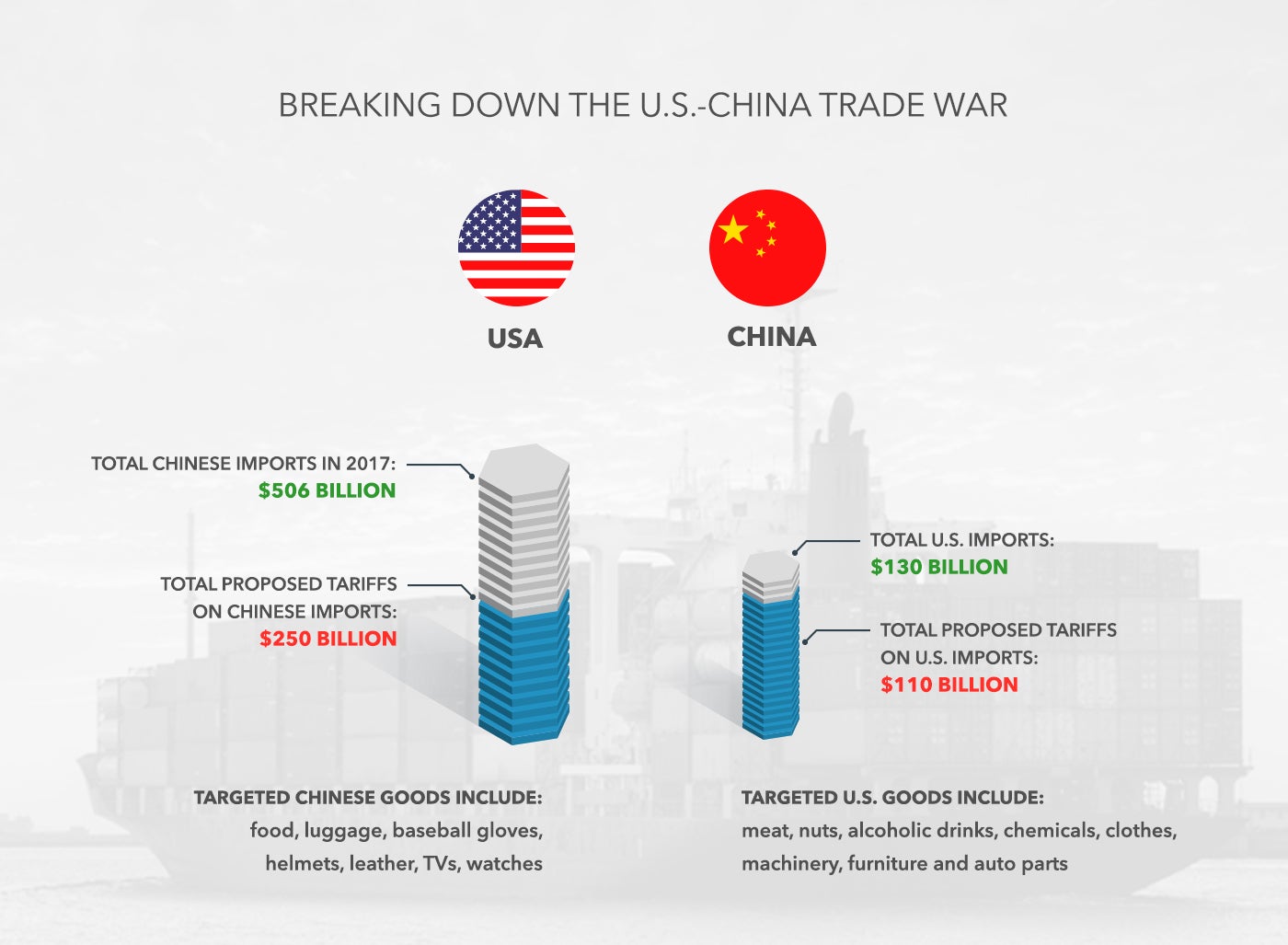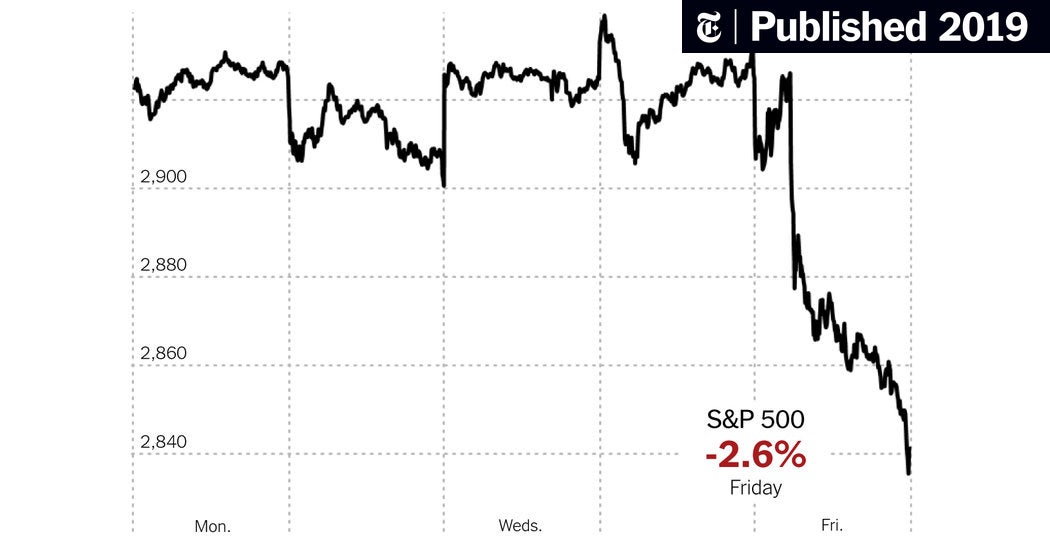U.S. And China Tariff Reductions: A Comprehensive Economic Analysis

Table of Contents
Historical Context of U.S.-China Tariffs
The escalation of tariffs between the U.S. and China represents a significant chapter in recent global trade relations. The trade war, largely initiated under the Trump administration, saw a dramatic increase in import tariffs on a wide range of goods. This period of US-China trade relations was marked by several key events:
- Initial imposition of tariffs (2018): The Trump administration imposed tariffs on steel and aluminum imports, followed by tariffs on billions of dollars worth of Chinese goods, citing concerns over unfair trade practices and intellectual property theft.
- Retaliatory tariffs from China (2018-2020): China responded with retaliatory tariffs on U.S. goods, impacting agricultural products, manufactured goods, and technology. This led to a significant disruption in global supply chains, impacting businesses worldwide.
- Escalation and de-escalation phases: The trade war saw periods of intense escalation, with both countries increasing tariffs on a wider range of products. However, there were also periods of de-escalation, marked by negotiations and partial agreements.
- Impact of the trade war on global supply chains: The imposition of tariffs significantly disrupted global supply chains, forcing businesses to re-evaluate sourcing strategies and leading to increased costs and uncertainty.
Analysis of Recent Tariff Reductions
While the trade war saw significant tariff increases, there have also been instances of tariff reductions. These reductions, often linked to specific trade agreements, have had varying impacts on different sectors.
- Specific tariff reduction agreements: The "Phase One" trade deal between the U.S. and China in 2020 saw some reductions in tariffs, particularly on agricultural products. Subsequent agreements and unilateral decisions by both governments have also resulted in further reductions.
- Sectors impacted: The impact of tariff reductions has been felt across various sectors, including agriculture (soybeans, pork), manufacturing (electronics, machinery), and technology. The effects have been uneven, with some industries benefiting significantly from reduced import costs, while others face ongoing challenges.
- Quantifiable data on tariff reduction percentages: Precise figures on tariff reduction percentages vary depending on the product and the agreement. However, data from organizations like the World Trade Organization (WTO) and national trade agencies provides detailed information on tariff rates before and after reductions. For example, tariffs on certain agricultural products dropped by X% under the Phase One trade deal.
Economic Impacts of Tariff Reductions
The economic impacts of U.S. and China tariff reductions are complex and far-reaching. They affect not only the two main actors but also the global economy:
H3: Impact on U.S. Economy:
- Changes in consumer spending patterns: Reduced tariffs on certain goods can lead to lower consumer prices, potentially boosting consumer spending. However, the effects depend on factors like the elasticity of demand for the affected goods and the extent of the tariff reduction.
- Effects on specific U.S. industries: Some U.S. industries might benefit from increased competitiveness as import costs fall. Others might face increased competition from cheaper imports. The agricultural sector experienced a noticeable impact from changes to tariffs on Chinese imports.
- Impact on U.S. GDP growth: The overall impact on U.S. GDP growth is debated among economists, with some arguing for a positive effect through increased consumer spending and others highlighting potential negative impacts on specific industries.
H3: Impact on Chinese Economy:
- Changes in Chinese export patterns: Tariff reductions by the U.S. could potentially increase Chinese exports to the U.S. market, benefiting Chinese export-oriented industries. Conversely, retaliatory tariffs could negatively impact Chinese exports.
- Impact on Chinese domestic industries: Domestic Chinese industries competing with imported goods could face increased competition from cheaper imports after tariff reductions.
- Effects on Chinese GDP growth: The impact on Chinese GDP growth is intertwined with the overall global economic climate and the effectiveness of government policies aimed at mitigating the effects of trade disputes.
H3: Global Economic Impacts:
- Impact on global trade flows: Tariff reductions between the U.S. and China can affect global trade flows, as businesses adjust their sourcing and export strategies.
- Effects on other countries' economies: Countries that are significant suppliers or buyers of goods impacted by the U.S.-China tariffs can experience indirect effects.
- Influence on global supply chain restructuring: The ongoing trade tensions between the U.S. and China are pushing businesses to diversify their supply chains, reducing dependence on either country.
Future Outlook and Predictions
Predicting the future of U.S.-China trade relations and tariff policies is inherently challenging. However, several potential scenarios can be considered:
- Predictions for future tariff changes: Further tariff reductions are possible, particularly if both countries prioritize de-escalation and mutually beneficial trade agreements. However, renewed trade tensions could lead to further tariff increases.
- Potential impacts of continued de-escalation: Continued de-escalation could lead to greater stability in global markets, fostering increased investment and economic growth. Improved trade relations can boost global trade and reduce uncertainty.
- Risks of renewed tariff increases: Geopolitical risks and disagreements on trade practices could easily trigger renewed tariff increases, potentially disrupting global supply chains and harming economic growth.
Conclusion:
This comprehensive analysis of U.S. and China tariff reductions highlights the complex economic interplay between these two global superpowers. Recent reductions have demonstrably impacted various sectors and national economies, influencing everything from consumer prices to global supply chains. However, the future trajectory of U.S.-China trade relations remains uncertain, underscoring the need for continued monitoring and analysis of U.S. and China tariff reductions and their ripple effects throughout the global economy. Stay informed on the latest developments to effectively navigate this evolving landscape of U.S. and China tariff reductions and their broader economic consequences.

Featured Posts
-
 Las Vegas Aces Training Camp A Player Released
May 13, 2025
Las Vegas Aces Training Camp A Player Released
May 13, 2025 -
 S And P 500 Soars 3 On Us China Trade War Tariff Deal
May 13, 2025
S And P 500 Soars 3 On Us China Trade War Tariff Deal
May 13, 2025 -
 Doom The Dark Ages Gameplay Story And More
May 13, 2025
Doom The Dark Ages Gameplay Story And More
May 13, 2025 -
 Chto Izvestno O Syne Tatyany Kadyshevoy Grigorii Kostyuke
May 13, 2025
Chto Izvestno O Syne Tatyany Kadyshevoy Grigorii Kostyuke
May 13, 2025 -
 Ukraine Peace Talks Zelensky Seeks Trumps Involvement
May 13, 2025
Ukraine Peace Talks Zelensky Seeks Trumps Involvement
May 13, 2025
